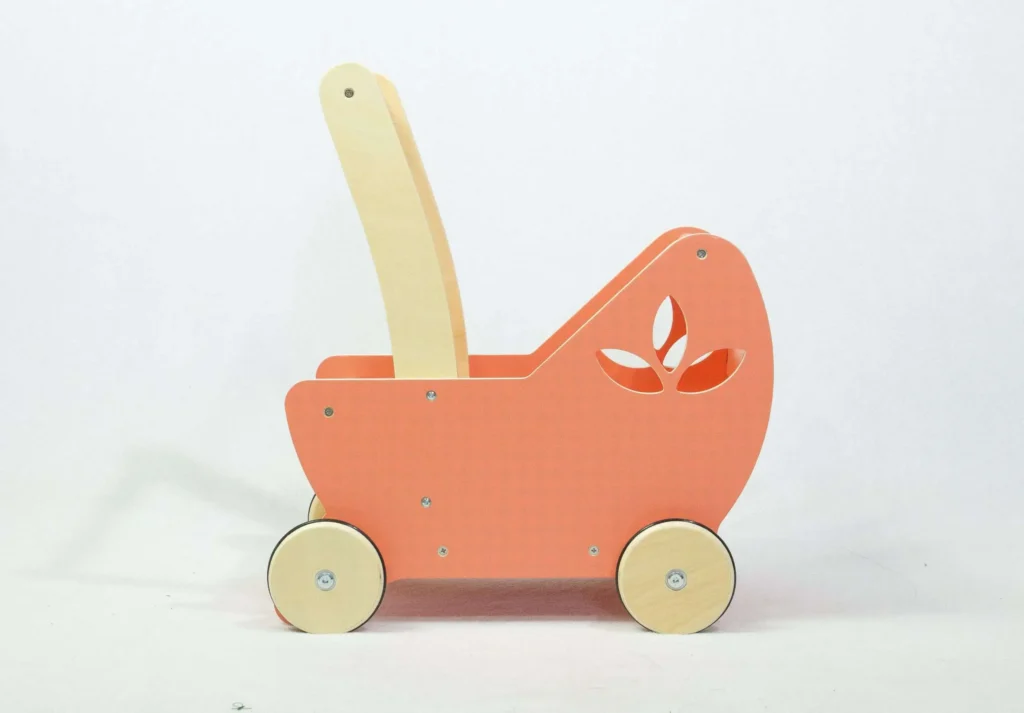When Do Babies Start Walking and How to Encourage It

Watching a baby take their first steps is one of those heartwarming milestones that feels like a celebration of growth and discovery. It marks the beginning of a new chapter in their journey of exploration and independence. But when exactly do babies start walking, and how can we, as parents, support them in this natural development stage? Walking is not just a physical achievement; it’s a complex dance of balance, strength, and coordination, all coming together in perfect harmony. Supporting this milestone involves more than just waiting for it to happen; it’s about providing a nurturing environment that encourages those tentative first steps. Let’s understand this exciting phase and explore how we can gently guide our little ones toward taking those joyful leaps forward.
Understanding the Milestones
Walking is a significant developmental milestone for babies, heralding a new stage of independence and exploration. This journey, influenced by genetic, physical, and environmental factors, varies widely among little ones. Let’s delve deeper into what this entails and how you, as a parent, can play a supportive role.
Typical Age Range When Baby Starts Walking
There is no definite answer to the question “When does a baby start walking?” The general timeline when a baby starts walking is broad, typically ranging from 9 to 18 months. This period represents rapid growth and learning, where each baby progresses at their own pace. Early walkers may surprise their parents by taking those first steps closer to 9 months, while others may take their time, perfecting their balance and coordination until they’re closer to 18 months or beyond. It’s crucial to understand that this timeline is a guideline, not a strict rule. Each child’s developmental journey is unique, and one must not rush their natural progression milestones – the average age may vary.
Variability in Development and What Factors Influence It
Why do these timelines differ so much? The answer lies in a combination of genetics and environment. Genetics can influence hair color and height but also control when a child starts walking. However, the environment is equally influential. A supportive, safe space that encourages exploration and movement can significantly impact a child’s physical development, including providing opportunities for your baby to engage in floor play and strengthening the muscles needed for walking. Nutrition, health, body weight, and parental encouragement and interaction can also affect when and how quickly your child achieves these milestones. Understanding this variability helps set realistic expectations and create a nurturing environment tailored to your child’s needs.
Recognizing the broad range of normal development and the factors that influence it, parents can better support their children’s journey towards walking and other milestones, ensuring they receive the encouragement and opportunities needed to thrive.
Signs Your Baby Is Ready to Walk
As your baby grows, you’ll eagerly await those first independent steps. Recognizing the signs that your little one is gearing up to walk can help you provide the proper support and encouragement. But, “When should a baby start walking?” Let’s explore the key indicators and how you can foster their development.
Pre-walking Signs and Motor Skills Development
Before babies start walking, they often show several pre-walking signs and developments in their motor skills that hint they’re getting ready. Here are some indicators to watch for:
- Pulling up to stand: Seeking support from furniture like a coffee table to hoist themselves up.
- Cruising: Moving along furniture while holding on for support.
- Standing without support: Brief moments of standing unaided.
- Squatting and getting back up: Demonstrating strength in their legs.
- Practice walking with help: Enjoy assisted walking, holding onto hands, or using push toys.
These milestones suggest your baby is building the strength, balance, and confidence to walk independently.
Encouraging Crawling as a Precursor to Walking Skills
Crawling is an essential stage before walking, offering numerous benefits:
- Strengthens muscles: Builds the muscle strength needed in the legs, arms, and back for walking.
- Develops coordination: Enhances hand-eye coordination and the ability to navigate space.
- Improves balance: Helps understanding body positioning and balance, which are crucial for walking.
Encouraging crawling can be as simple as giving your baby plenty of floor time in a safe, open area. Engage with them on the floor, using toys and games to motivate movement. Remember, crawling stages vary, and some babies may spend more or less time in this phase. Supporting their journey through encouragement and engagement is critical to their development.
How to Support Your Baby’s Walking Journey
Embarking on the journey to support your baby’s walking is an exciting phase filled with nurturing steps and milestones. Creating an environment that fosters this development is critical to encouraging those first steps. Let’s explore how you can support your baby’s walking journey.
Safe Environment Setup for Practice
Ensuring a safe environment for your baby involves meticulous preparation of their immediate surroundings, and this means baby-proofing your home by covering sharp edges, securing furniture that can tip over, and removing small objects that pose a choking hazard. Creating a designated ‘safe zone’ filled with stimulating wooden toys for toddlers that encourage movement can make practice time safe and enjoyable. Use gates to keep your baby away from potentially dangerous areas like stairs or kitchens, and ensure the floor is clean and free of small debris that they might pick up.
Importance of Barefoot Time for Sensory Feedback and Balance
Barefoot time plays a pivotal role in developing your baby’s walking skills. A baby walking barefoot on different textures helps enhance sensory feedback, which is crucial for balance and understanding spatial orientation. It strengthens the foot muscles, making them more adept at navigating various surfaces. Encourage your baby to spend significant time without shoes, both indoors and on safe outdoor surfaces. This natural approach helps them adjust their balance and learn how to walk with more agility and confidence.
The Role of Push Toys in Developing Balance and Confidence
Push toys promote balance and confidence like a high-quality wooden baby walker. These toys serve as a support mechanism, allowing babies to lean on something stable as they hone their walking skills. Selecting a suitable push toy is critical; it should have a sturdy base to prevent tipping over and be easy for your baby to maneuver. Additionally, push toys and baby walkers can double as educational tools, equipped with shapes, colors, and even puzzles to engage your baby’s cognitive skills as they explore their environment.
Features of Baby Walkers
Baby Walkers should be designed with the baby’s safety and environmental sustainability. Look for walkers made from non-toxic, environmentally friendly materials such as sustainably sourced wood. The design should prioritize stability to prevent falls, with features like a broad base and adjustable speed settings to match your baby’s development pace. Some walkers also include interactive elements that encourage learning and play, making the walking journey not just about physical development but also about engaging your baby’s curiosity and cognitive growth.
This approach aids your baby’s physical development and ensures a holistic approach to their growth, combining safety, sensory development, motor skills enhancement, and environmental consciousness.
Activities to Encourage Walking
Encouraging your baby to walk involves more than just waiting for those first steps; it’s about engaging them in activities and games that promote muscle strength and coordination. Incorporating fun and interactive games supports their physical development and bonds with your little one during these precious moments.
Games to Strengthen Muscles and Coordination
To enhance the activities that encourage walking and overall development for your baby, consider the following expanded ideas:
- Balloon Push: This simple yet effective game encourages your baby to push a balloon across the room. It’s a delightful way to improve their balance and coordination. As they focus on keeping the balloon in the air, they’ll practice their standing and stepping skills without realizing it.
- Obstacle Course: Use pillows, riding toys for toddlers, and cushions to create a safe obstacle course in your living room. This activity encourages your baby to navigate different challenges, promoting problem-solving skills. Crawling over, around, and through obstacles enhances their physical coordination and encourages exploration and curiosity.
- Dance Party: When your baby starts wearing shoes, Music and movement are beautiful tools for child development. By holding your baby’s hands and encouraging them to bounce to the beat, you strengthen their leg muscles and introduce them to rhythm and music. This joyous activity can boost their mood and is an excellent opportunity for bonding. Your baby will walk soon.
Using Toys and Everyday Objects as Incentives to Move
Creating an engaging and stimulating environment is critical to motivating your baby to move and explore. By strategically placing toys just beyond their reach, you encourage them to stretch, crawl, or even take steps toward their goal. Opt for toys with bright colors, varied textures, and sounds to captivate their attention and stimulate their senses. Incorporating everyday objects like remote controls (with batteries removed), plastic cups or colorful scarves can pique their curiosity and promote movement. This approach not only aids in physical development but also cognitive skills, as it rewards their efforts with the joy of discovery and play. The goal is to make their learning journey fun and filled with exploration, enhancing their development naturally and joyfully.
By engaging in these activities, you help your baby develop the necessary skills for walking and create a joyful and stimulating environment for their overall development.
What to Avoid
When embarking on the exciting journey of helping your baby learn to walk, knowing what to avoid is just as important as knowing what to do. Steering clear of common mistakes can help ensure your baby’s development remains healthy and natural.
Common Mistakes Parents Make When Encouraging Walking
Parents, in their enthusiasm, can sometimes push their little ones too hard or rush the walking process. Here are some pitfalls to avoid:
- Avoid Baby Walkers and Jumpers From Overuse: While these tools seem helpful, excessive use can hinder the natural development of walking skills and muscle strength.
- Forcing the Process: Trying to make a baby walk before they’re ready can lead to frustration for both the baby and the parent. It’s crucial to let them reach this milestone at their own pace.
Why Not Rush the Process or Rely Too Much on Walkers and Jumpers
The natural learning to walk involves much more than just leg movement. It includes developing balance, muscle strength, and coordination, due to which an over-reliance on walkers and jumpers can hinder the process. These devices might offer short-term convenience but can ultimately delay the development of essential motor skills and the confidence to explore independently. Encouraging natural movement through play and safe exploration and allowing your baby to progress at their own pace fosters a healthier development pathway.
Conclusion
As you guide your baby through walking milestones, remember to cherish each moment and your unique journey together. Patience and encouragement are vital to fostering an environment where your little one feels supported and confident to explore on their terms. Celebrate the small achievements and the giant leaps alike, knowing that each step, stumble, and stride is a part of their incredible growth journey. Enjoy this fantastic time, and let the joy of discovery be your guide.

